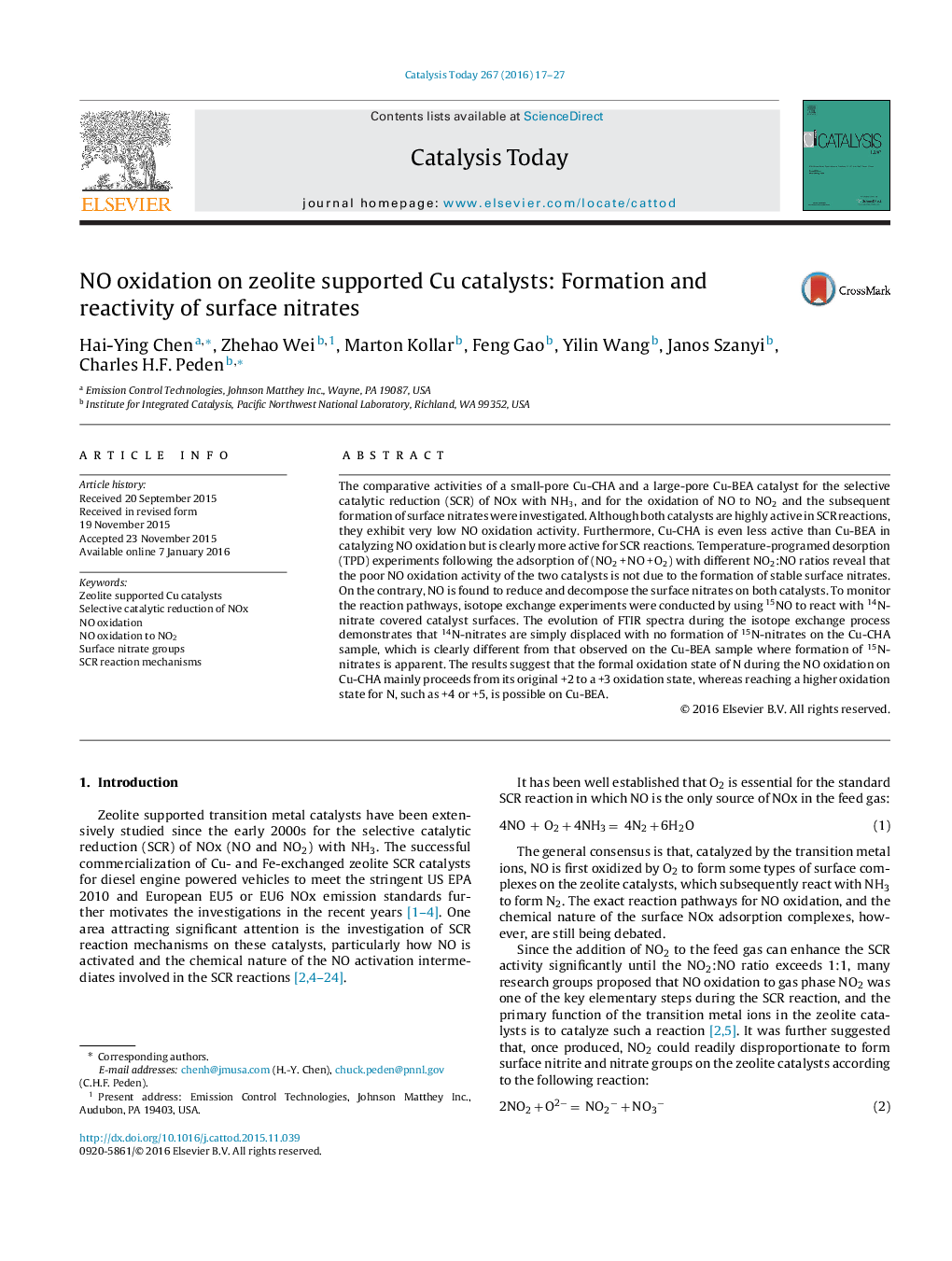| کد مقاله | کد نشریه | سال انتشار | مقاله انگلیسی | نسخه تمام متن |
|---|---|---|---|---|
| 53268 | 46961 | 2016 | 11 صفحه PDF | دانلود رایگان |

• Both Cu-BEA and Cu-CHA are highly activity in the SCR of NOx with NH3.
• Neither catalyst exhibits high NO to NO2 oxidation activity.
• NO reduces and decomposes surface nitrates on both catalysts.
• NO oxidation on Cu-CHA stops at +3 oxidation state for N.
• NO oxidation on Cu-BEA can reach a higher N oxidation state than +3.
The comparative activities of a small-pore Cu-CHA and a large-pore Cu-BEA catalyst for the selective catalytic reduction (SCR) of NOx with NH3, and for the oxidation of NO to NO2 and the subsequent formation of surface nitrates were investigated. Although both catalysts are highly active in SCR reactions, they exhibit very low NO oxidation activity. Furthermore, Cu-CHA is even less active than Cu-BEA in catalyzing NO oxidation but is clearly more active for SCR reactions. Temperature-programed desorption (TPD) experiments following the adsorption of (NO2 + NO + O2) with different NO2:NO ratios reveal that the poor NO oxidation activity of the two catalysts is not due to the formation of stable surface nitrates. On the contrary, NO is found to reduce and decompose the surface nitrates on both catalysts. To monitor the reaction pathways, isotope exchange experiments were conducted by using 15NO to react with 14N-nitrate covered catalyst surfaces. The evolution of FTIR spectra during the isotope exchange process demonstrates that 14N-nitrates are simply displaced with no formation of 15N-nitrates on the Cu-CHA sample, which is clearly different from that observed on the Cu-BEA sample where formation of 15N-nitrates is apparent. The results suggest that the formal oxidation state of N during the NO oxidation on Cu-CHA mainly proceeds from its original +2 to a +3 oxidation state, whereas reaching a higher oxidation state for N, such as +4 or +5, is possible on Cu-BEA.
Figure optionsDownload high-quality image (152 K)Download as PowerPoint slide
Journal: Catalysis Today - Volume 267, 1 June 2016, Pages 17–27